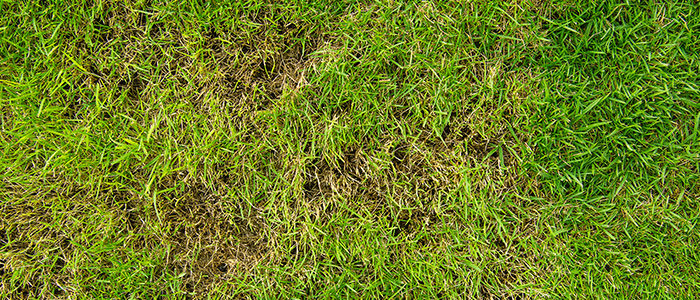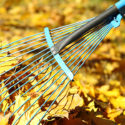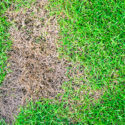A lush, green, well-maintained lawn is something every homeowner desires, though weather and other factors can make that difficult to achieve. Fortunately, there are effective ways to deal with damaged or dead grass that allow you to create an attractive lawn, contributing to your community pride.
Here are three common types of lawn damage and some tips on how to deal with each of them.
Dog Spots
When nature calls, you have to go. This is certainly the case for our canine friends. Unfortunately, if they urinate repeatedly on your lawn, it can serious damage to those sections of grass. The brown patches are due to excessive amount of salt coming from the urine into the soil root zone.
The best treatment is to flush the area with water to dilute the salt and apply gypsum (GREEN EARTH Granular Gypsum is a great option) and flush the area again. Gypsum is known to dislodge excessive amount of salts in soil structure. Then, take a rake and remove all the dead grass. Don’t be afraid to go right down to bare soil, as your grass seed needs to be in contact with the dirt for best results.
There are also products designed specifically to treat urine-related lawn damage that yield better results than simple re-seeding. These will further neutralize the salt, and also contain both a starter fertilizer and seed mulch. Cover the area with the product and then water periodically, using the directions provided.
Grub Damage
You may have noticed large brown spots appearing on your lawn at the beginning of August and attributed them to sun damage. However, the culprits are actually grubs and mid-summer is when their eggs hatch. The larvae soon burrow into the soil and chew off the roots of your grass, effectively killing it.
These grubs are typically the spawn of Japanese beetles and are just as destructive. There are some very effective pre-treatments available to prevent grub damage, but don’t worry, you can still deal effectively with this common lawn issue.
It is not possible to eliminate every single grub and most healthy lawns can withstand them. However, if the population grows beyond conventional size or your lawn’s root system is sub-par, they can become a major issue.
One way to help eliminate grubs is to cut back on watering in the latter half of the summer. If you choose a grass with deep roots, daily watering is not required, creating a less hospitable environment for grubs. Your lawn will continue to thrive, but the grub eggs on the surface will dry up and die.
Using beneficial nematodes in early spring and fall is very effective at killing grubs before they can hibernate and return as beetles the following spring. Lowering the number of grubs in your lawn also reduces the amount of damage caused by rodents looking to feed on them.
Snow Mold
Have you ever wondered why some lawns weather the winter just fine, while others emerge from the snow looking brown and dried up? The culprit is usually snow mold.
Sometimes snow will arrive early in the season, before the ground freezes, which results in a layer of moisture. This can be a real problem if your lawn is newly seeded. The abundance of nutrients coupled with moisture provides a perfect breeding ground for this type of mold.
Use a rake to loosen up the top of the damaged areas and then add a starter fertilizer (choosing one with a large amount of phosphorous will help to encourage root growth). Follow this with your grass seed, thoroughly covering the affected areas. Add about a quarter inch coverage of compost. This provides moisture and protection from the elements. Water the area, but do not add so much that it causes the seed to wash away.
Have additional questions about lawn recovery? Drop us a line and one our experts will be happy to help you!
Suggested Products
-
No suggested products found.



